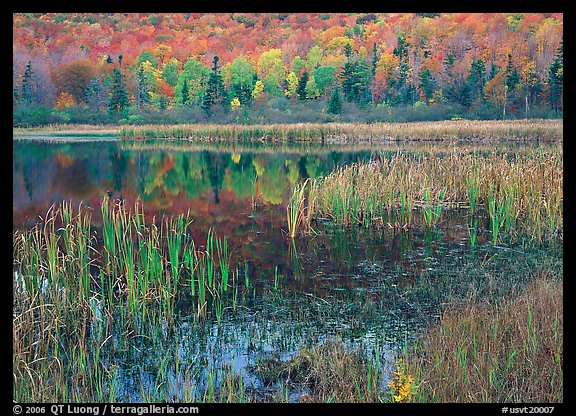Large Format photography in “Treasured Lands”
4 Comments
In exactly one week, I will be giving a second lecture about “Treasured Lands”, the exhibition of my 58 images of the National Parks at the National Heritage Museum. Since in my first lecture, I talked quite a bit about large format photography, I won’t do it again in the new lecture, and instead focus on new work done in the interval. Here are some remarks delivered during the first lecture.
In the summer of 1993, after moving to the San Francisco Bay area, inspired by the rich local tradition of US Western landscape photography, I began to use the large format camera. The more contemplative approach that this exacting type of photography promotes, and the extremely detailed prints it produces are perfect for making the viewer feel immersed in the land. I had found the perfect tool to share the sense of wonder and passion inspired by the US National Parks. Each image in the “Treasured Lands” exhibit was photographed using the same large format camera.
You need to operate such an instrument in a more deliberate way than a small format camera. Just to be able to see the composition, you need to put the camera on a sturdy tripod and slip under the a dark cloth – because the viewing glass is so dim. As everything is manual, not only focus and exposure, but also film transport, there are countless ways to ruin an image. The cost of each exposure adds to the time commitment it requires, favoring more conscious decision making. You need to make choices before shooting, rather than doing so after the shoot.
The primary reason for putting up with such a demanding camera – so heavy to carry in the wilderness – is the amount of detail recorded, thanks to the sheer dimensions of the sheet of 5×7 transparency film, whose surface area is about 25 times that of a 35mm (“full”) frame. Moreover, besides the focussing knobs, there are six other mechanical controls that affect perspective and sharpness distribution. For instance, by tilting the lens with respect to the film plane, I can get in perfect focus two objects that are at a different distance from the camera, rendering deep space in a uniformly clear way.
When I photograph a wide-angle scene, with an angle of view equivalent to that of a 24mm lens on 35mm camera, I am using a lens of 110mm focal length on my large format camera. A tree in the distant background is rendered as clearly as if I had focussed on it with a telephoto, and framed it tight. I do not need to direct the viewer’s attention to it, but they can discover that tree when they explore the image for themselves.
This descriptive power let me produce images that are complex, taking the whole scene in without a singular point of focus, because they have so much detail that the viewers could take time and read them, look at all the features, and discover highlights and inter-relationships for themselves.
In that sense, those photographs give a sense of place and time by letting the viewers see through the images as much as I saw myself. They allow them to stand before the landscape in a state of heightened awareness similar to mine. Although they would observe these natural wonders through my own celebratory perspective, they would realize that there is nothing they could not experience for themselves. Hopefully, this would help them recognize that those unique areas are truly treasures to be preserved and protected for future generations.



Great post, such dedication Tuan in using the Large Format! Amazing images you’ve brought the world. Thanks for sharing such beauty!
What a spectacularly detailed image!
Thanks for posting about the upcoming lecture. We are looking forward to seeing you at the National Heritage Museum
Polly Kienle
Public Programs Coordinator
National Heritage Museum, Lexington, MA
Great post QT…time to break out my 5×7 B&J Grover…now that’s a beast!
BTW – do you mostly shot with a 110 for 5×7 landscapes? If so, what lens would you recommend? I have a 210MM Fujinon and would love to add a wide angle – I know some cover 5×7 and some don’t (218mm).
Thanks!
The Schneider Super Symmar XL 110/f5.6 is by far the best 5×7 wide. Plenty of coverage, sharp, fast, much lighter and smaller than a symmetrical design such as the Super Angulon.